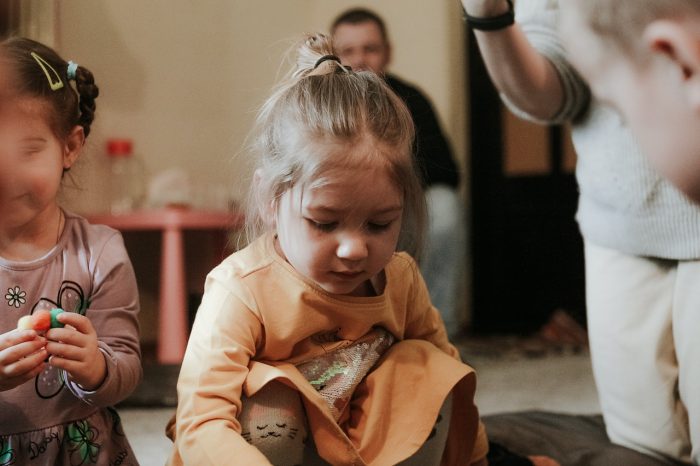“There can be no transforming of darkness into the light and of apathy into movement without emotion.” ~ Carl Jung
Growing up, I was often told to “shush,” to “eat concrete and harden up,” to “get over it,” and “get on it with.”
Essentially, in childhood, I was told that feeling was bad. That emotions were not to be felt and indeed not expressed. Although this never sat right with me at the time, as a little girl growing up in the world, I was trying to cement my place. So I listened.
What I need as a human is connection, growth, and belonging. I need to be seen, heard, and valued to feel safe. I love connection and having a voice to express myself. To say how I feel. And I connect best with others who have the capability to do the same.
After many years of healing and forgiveness, I have learned and accepted that my parents were doing their best with the tools they had. When I put myself in their shoes and envisioned how their parents treated them, I imagined what style of parenting they received. Each generation has a different form of parenting. For my parents’ generation, it seemed to be military style.
When I became a mother, I chose a conscious and aware parenting style. I knew deep within that I wanted to parent in a way that made my child feel seen, heard, and valued, as I certainly didn’t feel this way growing up. I want my child to know that I support him every step of the way. That what he feels matters and that his opinion matters too. I want him to have a voice and stand up for what he believes in. I encourage him to follow his dreams and passions, whatever that means; I wholeheartedly support him.
In 2019, I separated from the father of my son. They say the universe tests you in ways that ensure you are committed to your path and deep desires. These were the most challenging two years of my life. Not only did I have to feel into my emotions and process through a barrage of pain, years of unprocessed trauma needed to be processed to solidify the end of many unresolved hurts of past relationships/friendships and generational trauma so that I could evolve to a higher level of consciousness. This processing time was heavy, and I also had to hold space for my baby. At the time, he was six, so he needed me more than ever. He needed my guidance, my love, and my support. And quite honestly, I needed him too.
What I found worked well with my son was the expression of colour and art. He was too little at the time to express how he was feeling; it’s tough to express yourself when you are unsure of how you are feeling. So we used art. When he was dysregulated (difficulty registering emotions), we would get a piece of paper and draw circles. I would then ask him to put faces in these circles about how he is feeling. Often, he would draw—sad, disappointed, and angry. So we then attached a colour to these emotions. For example, blue would often be sad, red/angry, and green/disappointed. So I would ask him to feel into each feeling to explain why he was feeling this way. This process gave him space and time to feel what he was feeling and the strength to express it with love and support.
My journey with Art Therapy started over 20 years ago. I was introduced to a meditation teacher, as it was challenging to express myself. I would drown my sorrows with drugs and alcohol at the time. “Wellness” was not socially acceptable from my party peers, so I did this in secret. My teacher would ask me to draw how I felt during our sessions using colour. I would close my eyes and feel what my body needed to express. I did this for years before I could communicate verbally how I was feeling. Twenty years later, after “doing the work” in many forms, I feel confident to express how I feel freely.
The very foundation of Art Therapy is art itself. Art Therapy is a form of psychotherapy that uses art as its primary mode of communication. This powerful form of Therapy supports clients working through mental health, learning disabilities, child and family relationships, and beyond to understand the essence of issues and transcend subconscious beliefs, habits, and patterns that are not conducive to day-to-day living.
Art therapy, a kind of creative playground, is a unique healing and supportive therapy process. A therapist works with their client to make their unconscious conscious and helps them realise their full potential. So often, humans allow deep pain and subconscious beliefs to hold them back from their inner calling or purpose. This profoundly empowering, reflective process of Art Therapy helps support self-awareness, feeling into emotions, and encourages building a deeper level of resilience to allow processing through adversity. The approaches that apply to Art Therapy include: psychoanalytical, psychodynamic, humanistic, cognitive-behavioural, solution-focused, narrative, developmental art therapy, and multimodal. Judith Aron Rubin also adds: contemplative, cognitive and neuroscience, systematic and integrative.
It is my vision to work with children and teach them these lessons early on so they can learn how to self-regulate and control their emotions to make more connected decisions, without taking away from their life experiences that form the basis of who they are.
So what is self-regulation? Self-regulation is the ability to understand and manage your behaviour and reactions to feelings and things happening around you.
It includes being able to:
>> regulate reactions to strong emotions like frustration, excitement, anger, and embarrassment
>> calm down after something exciting or upsetting
>> focus on a task
>> refocus attention on a new task
>> control impulses
>> behave in ways that help you get along with other people
I am a firm believer in feeling into emotions, feeling into what needs to be released from the body. I encourage tantrums, as I believe tantrums happen when a child is dysregulated. When they have big emotions rising, it often scares them, as they haven’t learned how to self-regulate. In these moments, they quite often don’t feel safe.
My calling is to teach children and parents the tools I have learned to process big emotions and practice self-love. I have learned these lessons (and mistakes) through my own life experiences, my child’s journey, and our traumas.
In practice, I teach children and parents the strategies for dealing with big emotions and feelings in a healthy, fun way. I invite them to model empathy so children can unapologetically be themselves. I encourage the power of listening, the power of presence; when someone feels a presence, they feel seen and heard, and to be seen and heard in this world is what many humans crave.
When a child reaches seven or eight, their brain develops. They begin to learn more words. So teaching kids these tools at an early age helps and supports them to develop the capabilities to be able to say, “Mummy, I’m sad, I need a hug,” or “I need to have a big cry,” or “Can you help me move these big emotions through my body?” A new language starts to develop and creates deep emotional safety. So when a child becomes a teenager, the teenager feels empowered. They are also aware that the parent becomes the safest place to come to confide. In doing so, I also give parents permission to become who they want to be and ask for what they need to feel safe, which is often a new language for them.
Art Therapy helps kids freely “let go” to find their creative identity, which helps build inner confidence to manage their big feelings. Art Therapy helps them to engage in self-exploration. It has also been used to help children develop social skills and raise self-confidence. It’s a fantastic addition to positive psychology, as at its core, it seeks to help individuals overcome emotional or psychological challenges to achieve a greater sense of personal well-being.
For children who may not be able to articulate thoughts, sensations, emotions, or perceptions, Art Therapy is one way to convey what may be difficult to express with words. In addition, the sensory characteristics of art effectively improve mood, sensory integration, and calming the body and mind, especially with children who have experienced traumatic events. Another strength of Art Therapy is its ability to encourage and enhance storytelling and narratives, which has a literal effect of being therapeutic.
If only Art Therapy existed in my day, I might not have spent most of my adult life processing my childhood traumas. But then again, if my past were altered, I wouldn’t be who I am today.
Please consider Boosting our authors’ articles in their first week to help them win Elephant’s Ecosystem so they can get paid and write more.












Read 0 comments and reply